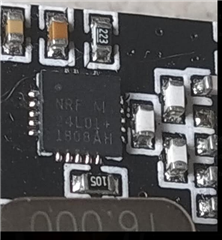My end goal for development is something like the following.
Master sends 0x00 slave sends back 13 bytes of data.
Master sends 0x01 slave sends back one byte of data.
Master sends 0x02, 0x03, 0x04 slave calls a function with parm (3,4)
My plan is to send the data with disabling auto ack from the master and then going in to receive mode, and having the slave return the data by going in to transmit mode. Though I was wondering if any of that can be automated with a custom ack?
EDIT: Ok just read this on the net.
"This acknowledgement message can contain a preloaded payload, meaning a system of bi-directional communications can be established entirely using a master device that transmits data requests to each slave device in succession. The nRF24L01+ does this by storing a preloaded message into its transmit First-In-First-Out (FIFO) buffer, and sending this message on the listening pipe address as soon as a message with ack payload requested is received."
If that sort of thing is possible, is there a small example or write up on that? Can a "preloaded message" be dynamic?




